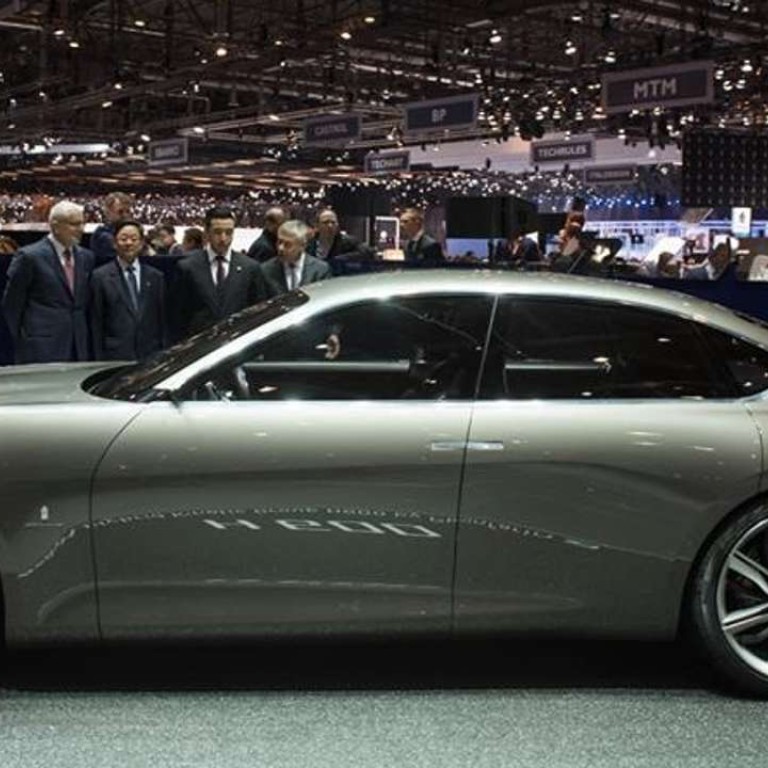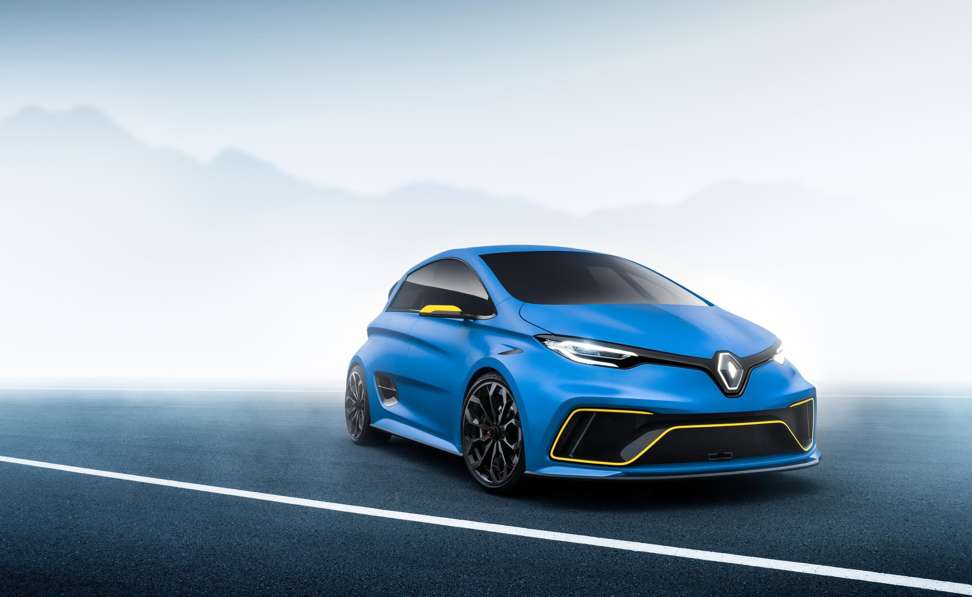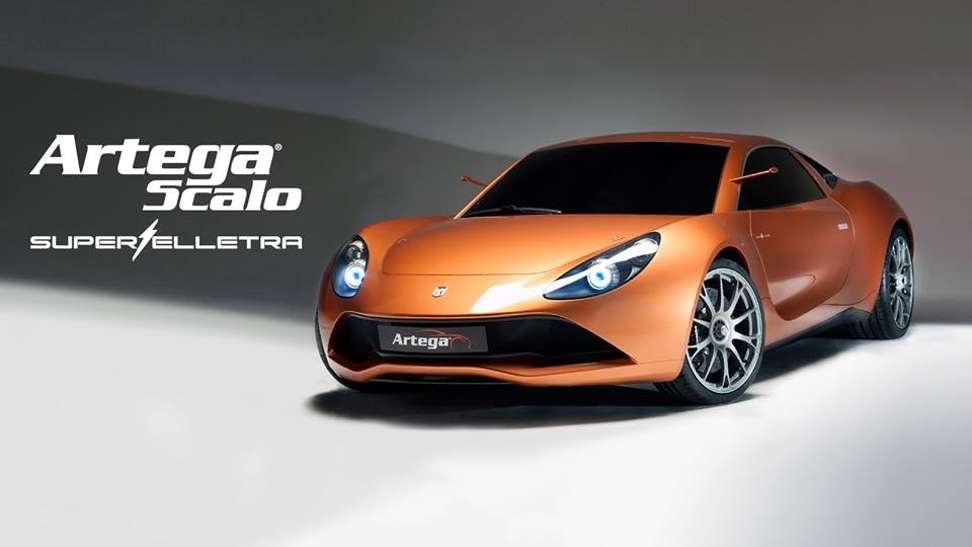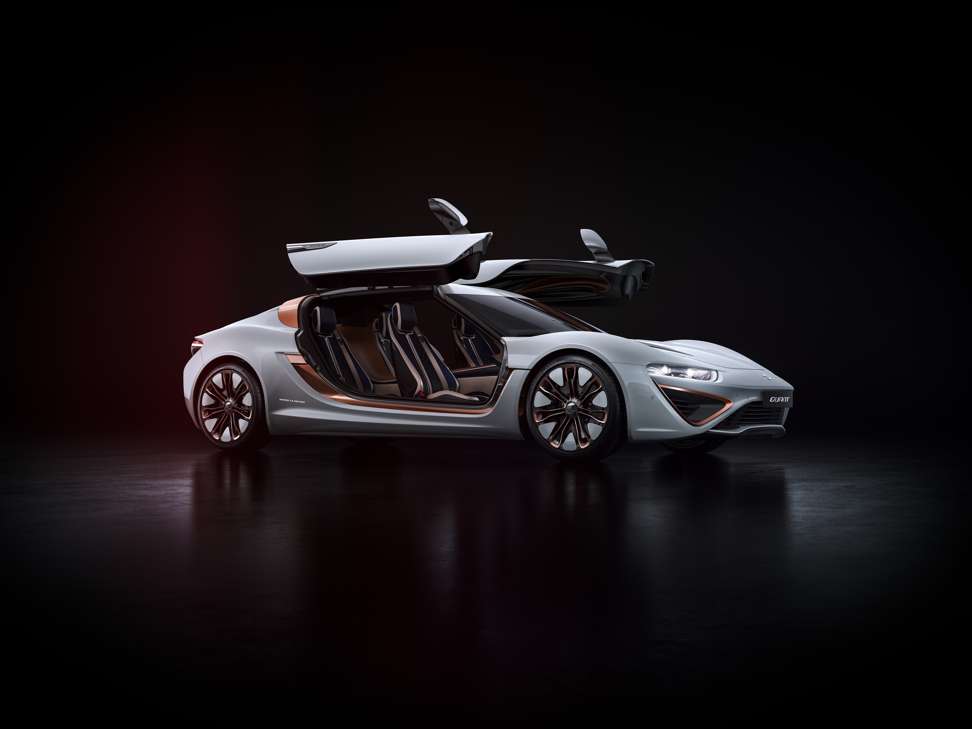
Electric vehicles charged up for the long haul in HK
Hybrid Kinetic’s H600, Vanda Dendrobium, Renault’s Zoe e-Sport, Artega Scalo Superelletra and Quant 48Volt showcase prowess at Geneva motor show
An impressive range of new electric vehicles went on display at the Geneva International Motor Show this week. How much interest they will generate among Hongkongers is questionable, however, given the government’s flip-flop approach to plug-in motoring. Local hopes for cleaner, quieter roads may be short-lived. On February 23, the government announced that from April Fool’s Day, the first-registration tax of electric private cars would be waived up from zero to HK$97,500. The future of plug-in power in Hong Kong is now uncertain – just as carmakers rolled out four beautiful electric vehicles – and a smart locally-funded hybrid.
The big-grilled saloon is powered by a 30kwh grapheme enhanced super battery and a 60kw micro turbine power generator as its range extender, Hybrid Kinetic Group says. The micro turbine generator can charge the battery anywhere and anytime, and with a variety of fuels, which “removes the ‘range anxiety’ that has been the bottleneck for comparable existing EV’s”, the company says.
The H600 can also generate electricity for homes and communities “[as well as] charge other electric vehicles”, it says. “New energy vehicles such as H600 will fundamentally change the status quo of electric vehicles’ reliance on charging infrastructure, electric grid support, and government subsidies.”

The two-seater Dendrobium’s design “improves access to the cockpit” and includes a charging-status light; a driver-focused dashboard and a sleek carbon-fibre body on 20- and 21-inch wheels, the company says. Singapore’s hypercar concept also has a central rear light that evokes the jet age.

Fitted with new connectivity, such as Z.E. Trip and Z.E. Pass, the fast, quiet electric vehicle looks track ready with FIA-standard harnessed Recaro bucket seats, four drive modes and Formula E style controls, all in the blue and yellow of the ePrix champion Renault e.dams team.

The aluminium and carbon-fibre Artega Scalo Superelletra may sound Italian but is German, and with the finest electric vehicle credentials. The Delbruck, Westphalia-based Artega brand appeared in 2009 with a Volkswagen petrol V6 two-seater GT. Its chief executive, Klaus Frers, is the great-great-great-grandson of Christopher Becker, who helped to develop the first electric vehicle in 1835. Artega launched the Scalo EV in 2015 and presents the Scalo Superelletra at the Geneva show, which closes on Sunday.
Named after Scalo, a Westphalian stallion, the electric Artega Scalo Superelletra has four e-engines producing a combined 1,020hp for 100km/h in just 2.7 seconds and a top speed of 300km/h.
Aiming for a range of over 500km between charges, the marque says its e-fastie generates 100km of range within four minutes and is 80 per cent charged in 17. The driver sits in the centre of three seats, so “the car can be delivered into any market without need for ordering specifically right- or left-hand drive”, the marque says. Fifty Superelletra are expected to be built from Spring 2019, the marque says.

Kilchberg, Switzerland-based nanoFlowcell presented its latest fuel cell research at the show. The four-year-old group has produced the world’s first electric sports car with flow cell drive, the Quant FE, and the Quantino, the first road-legal electric vehicle with low-voltage drive.
In Geneva this week, the group presented its 760hp Quant 48Volt supercar, which has nanoFlowcell’s new 48Volt low-voltage drive, which promises 100km/h in 2.4 seconds, a top speed of 300km/h and a range of over 1,000km.

